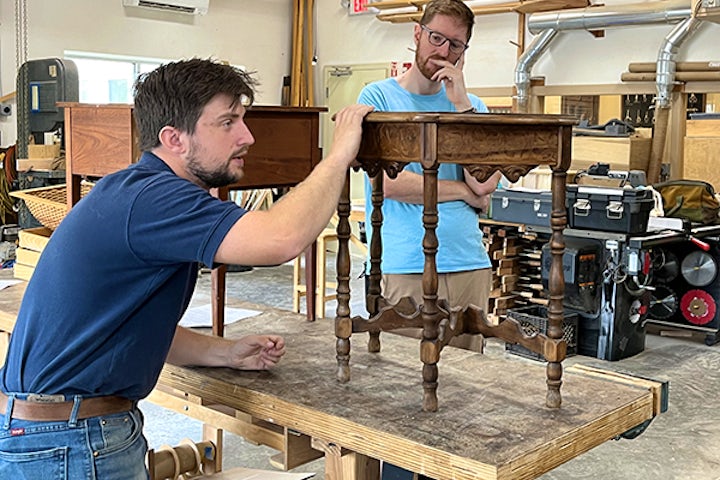20Shift: Your Daily Dose of Insight
Stay updated with the latest trends and news across various domains.
From Trash to Treasure: Furniture Restoration Adventures
Discover the art of transforming discarded furniture into stunning masterpieces! Join our restoration adventures and unleash your creativity today!
10 Essential Tools for Furniture Restoration: A Beginner's Guide
Furniture restoration is a rewarding hobby, but having the right tools is essential to achieving a successful outcome. Here are 10 essential tools for furniture restoration that every beginner should consider adding to their toolkit. These tools will not only help you work more efficiently but also ensure that your restored furniture looks professional and timeless.
- Sandpaper: A variety of grits will help you smooth surfaces and prepare them for finishing.
- Paint or varnish strippers: These will aid in removing old finishes, allowing you to start fresh.
- Screwdrivers: A set of both flathead and Phillips screwdrivers is crucial for disassembling and reassembling furniture.
- Plyers: Useful for gripping, twisting, and pulling nails or staples from the wood.
- Wood glue: Essential for making strong bonds when repairing joints and cracks.
- Clamps: These will hold pieces securely together while the glue dries.
- Paintbrushes: Invest in good-quality brushes for an even application of paint or finish.
- Finishing rags: Use these to smooth finishes or wipe off excess stain.
- A tape measure: Accurate measurements are vital for any restoration project.
- A safety mask: Always protect your lungs when sanding or using chemical strippers.

Before and After: Inspiring Furniture Transformations You Can Try
Transforming your furniture can breathe new life into your space, and the best part is that you don’t need to be a professional to achieve stunning results. With a bit of creativity and some basic supplies, you can create impressive before-and-after pieces that will inspire you and others. Consider starting with a piece of furniture that is in need of some TLC. Painting, reupholstering, or even adding decorative elements like stencils can dramatically change the look and feel of your item. For instance, a dated wooden coffee table can become a chic, rustic centerpiece with a coat of white chalk paint and some distressing techniques. The transformation is not just aesthetic; it's a rewarding experience that enhances your DIY skills!
Once you dive into furniture transformations, you’ll likely discover a newfound passion for upcycling. A simple change, like swapping out old hardware on cabinets or adding a splash of color to a dull bookshelf, can have a significant impact. Here are three inspiring projects to consider:
- Refinishing a worn-out dresser: Strip, sand, and repaint for a fresh, modern look.
- Updating dining chairs: Reupholster with vibrant fabric for a stylish dining room upgrade.
- Transforming a plain side table: Use stencils and bright paint to create a unique design that complements your decor.
How to Choose the Right Finish for Your Restored Furniture
Choosing the right finish for your restored furniture is crucial not only for aesthetics but also for the durability of the piece. First, consider the material of the furniture, as different materials interact uniquely with various finishes. For instance, hardwoods like oak and cherry absorb stains differently compared to softer woods like pine. Additionally, think about how you plan to use the furniture; a dining table will likely need more protection than a decorative bookshelf. Here are some popular options to consider:
- Oil finishes – Great for enhancing the natural beauty of wood.
- Polyurethane – Offers excellent durability and scratch resistance.
- Varnish – Provides a hard, protective coating.
Once you have an understanding of the material and intended use, the next step is to test your selected finish. Always apply a small amount on a concealed area or a scrap piece of the same material before proceeding. This allows you to see how the color and texture look once applied. If you’re aiming for an authentic vintage look, consider using a wax finish for a soft sheen, or an antique glaze for an aged effect. Remember, the right finish can significantly enhance the character of your restored furniture, so take your time and choose wisely!